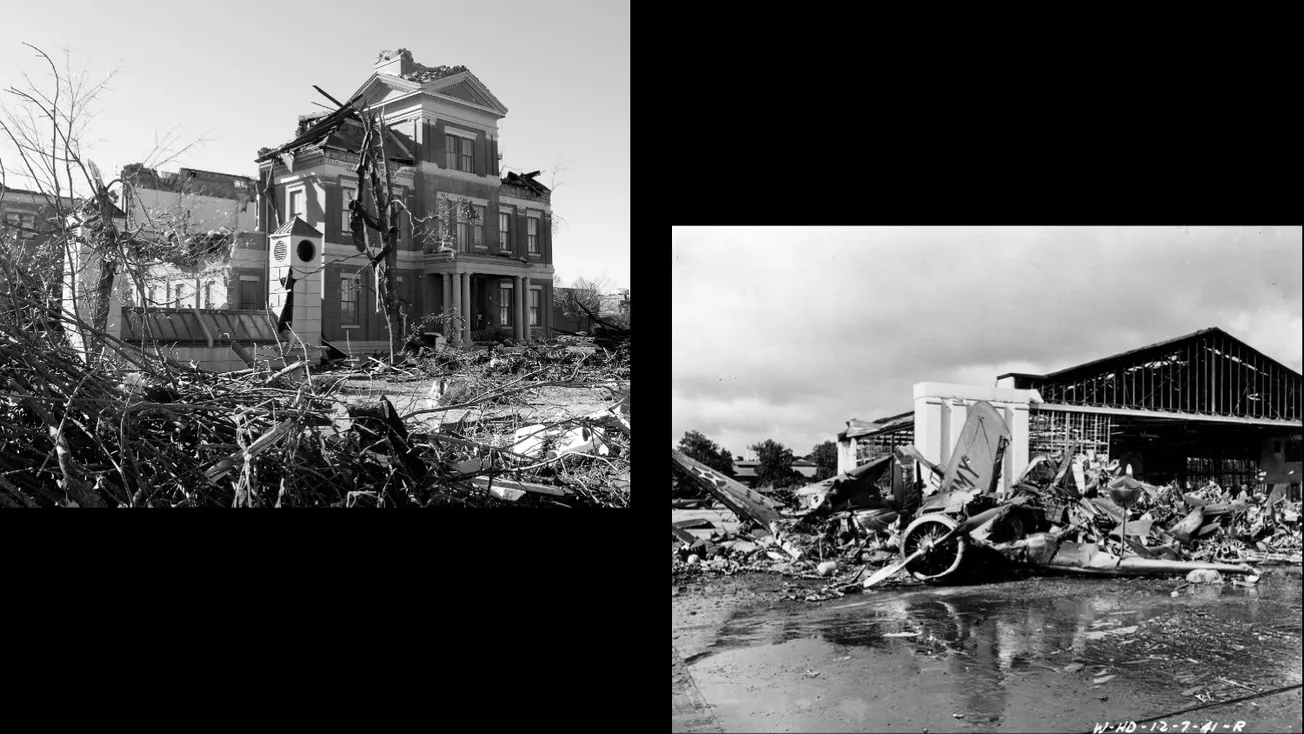Tommy Lewis of Mayfield found it hard to talk about December 7, 1941, the day Japan attacked Hawaii and bombed the U.S. into World War II.
“They didn’t prepare us for that,” said Lewis, then a 20-year-old army private based at Schofield Barracks, 16 miles inland from the focus of the surprise air raid: destroying the Pacific Fleet moored in Pearl Harbor on the south side of Oahu.
But Japanese warplanes also targeted military airfields on the island, including Wheeler Army Airfield, Hawaii’s main fighter base, which adjoined Schofield Barracks.
“It’s like if Mayfield was to be bombed today,” said Lewis, who died in 2010. “All the people not expecting it. Not knowing what to do. Not knowing where to go.
“Just standing around and seeing things happen, they didn’t think could happen, would happen, or were happening.”
Today is the 81st anniversary of the Pearl Harbor attack. This Saturday will be the first anniversary of the most cataclysmic event in Mayfield history: a supercharged tornado that devastated much of the town. Dubbed “The Beast,” the storm killed 24 people in Mayfield and Graves County.
I interviewed Lewis for a story published in The Paducah Sun on Dec. 7, 1982. I can still hear his softly spoken words: All the people not expecting it. Not knowing what to do. Not knowing where to go.
So it was, too, a year ago Saturday night.
The Japanese attacked on a sun-washed Sunday morning. The Beast struck Mayfield on an unseasonably warm Friday night.
Lewis was a maintenance worker at the old General Tire plant, where he belonged to United Rubber Workers Local 665. (It became United Steelworkers Local 665 before the factory closed.)
He was hesitant to talk about Dec. 7, 1941, because of the horror he witnessed. I suspect many who survived “the Beast” will feel likewise, even four decades later. I imagine some already do.
Lewis was lucky. Schofield Barracks was only slightly damaged, mainly by sporadic strafing fire. “They didn’t bother us much,” he said. “They were mostly after Wheeler.”
Japanese dive bombers blasted hangers and machine-gunned the flightline, setting fighters ablaze. Thirty-eight Americans were killed.
The Japanese struck Hawaii in two waves; the first one roared over Oahu shortly before 8 a.m. While most of the fighters and bombers sped toward Pearl Harbor, a group of dive bombers veered off to bomb the hangers and strafe fighters rowed up along the flight line. Enemy planes from the second wave, which appeared about an hour later, also shot up the air base, but it was already wrecked.
The raid was over by 10 a.m. Most of the attacking aircraft returned to their six carriers, which steamed for home. They had killed more than 2,400 Americans.
The raiders sank or damaged 19 ships, including 8 battleships. Besides Wheeler, most of the other air bases on Oahu were damaged.
Lewis, unscathed, helped bury the Wheeler dead. “The ordnance people were supposed to do it. But it was a job everybody had to help with,” he said. “They hit an ammo dump and blew up a lot of planes. It was unbelievable.”
“Unbelievable” was one of the most common words uttered by survivors of the Beast a year ago this Saturday.
--30--
EDITOR'S NOTE: Berry Craig, a Mayfield native who lives in Arlington, Kentucky, taught history at West Kentucky Community and Technical College in Paducah for 24 years, He has written seven books on Kentucky history, including Kentuckians and Pearl Harbor: Stories from the Day of Infamy, which the University Press of Kentucky published in 2020. Tommy Lewis’s story is in the book.
Hello:
I have included two photos to illustrate this story. One is of Wheeler Army Airfield after the attack. It is from the U.S. Naval History and Heritage Command and is in the public domain. The other photo is one I took on Dec. 12, 2020.
Berry








